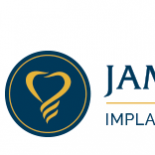
Digital Occlusal Technology in TMD, Implant and Restorative Dentistry
With the advent of computerized digital analysis clinicians we are now able to record relative bite pressure in time combined with muscle EMG data we are able to pinpoint occlusal disharmonies with precision. As with many of the digital tools we have today, this technology is underutilized and should be incorporated by dentists to ensure we are providing our patients with restorations that procure long term success and limit associated complications. This lecture is focused on instructing clinicians with use, diagnosis and treatment of occlusal disharmonies that can alleviate many of the complications including myogenous-based TMD. This lecture will consist of didactic, hands-on and live patient treatment to guide clinicians in proper use of digital occlusal technology.
Outline:
- Understand key mechanical and biological differences between dental implant and natural teeth and ideal implant-protected occlusal schemes in fixed and removable restoration
- Discuss computerized occlusal analysis role in diagnosing and treating prosthetic complications and force related peri implantitis
- Discuss inaccuracy of traditional occlusal marking paper when compared to digital occlusal analysis and related ineffective occlusal treatment
- Understand how to perform occlusal recording with the T-Scan and identify occlusal pathology including long disclusion time
- Understand how the neurophysiologic etiology of the long Disclusion Time/excursive muscle hyperactivity physiology creates the ischemic muscle pain commonly observed in TMD patients
- Understand how the T-Scan and BioEMG technologies simultaneously record and illustrate both the excursive Disclusion Time contacts and the resultant masticatory muscle hyperfunction that causes ischemia and pain
- Learn how to lessen excursive muscle hyperactivity and muscular ischemia is made possible with T-Scan guided occlusal adjustments to shorten the Disclusion Time
- Understand how to treat muscular TMD without appliances, mouth guards, NTI’s and deprogrammers
Event Details
About the Presenters
Robert B. Kerstein, DMD
Dr. Kerstein has conducted original research regarding the role that occlusion and lengthy Disclusion Time plays in the etiology of Chronic Myofascial Pain Dysfunction Syndrome. His now 34 years of research with all versions of the T Scan Digital Occlusal Analysis System has led to his becoming a leading author and researcher in the field of Computerized Occlusal Analysis. Dr. Kerstein began studying the original T-Scan I Technology in 1984. For many years now, Dr. Kerstein has lectured both nationally and internationally, about Prosthodontics, Implant Prosthodontics, Digital Occlusal Analysis, and treating muscular Temporomandibular Dysfunc-tion with DTR Therapy.
James A. Oshetski, DDS
Dr. Oshetski is a nationally recognized expert in implant dentistry. Through his extensive VAMC and private practice experience, Dr. Oshetski has placed and restored thousands of dental implants and has achieved Diplomate status with the American Board of Oral Implantology/ Implant Dentistry, a credential bestowed to only 500 dentists worldwide since its inception in 1969. Dr. Oshetski is an active participant in many dental societies and lectures nationally on multiple topics including: digital technology, complication management, anterior esthetics, TMD and full-arch rehabilitations.
Registration Details
7 credits; 5 didactic; 2 clinical
Fee: $550, ($495 early registration by May 1st.)
For additional information and to register, please visit: www.droshetski.com/oshetski-implant-seminars/